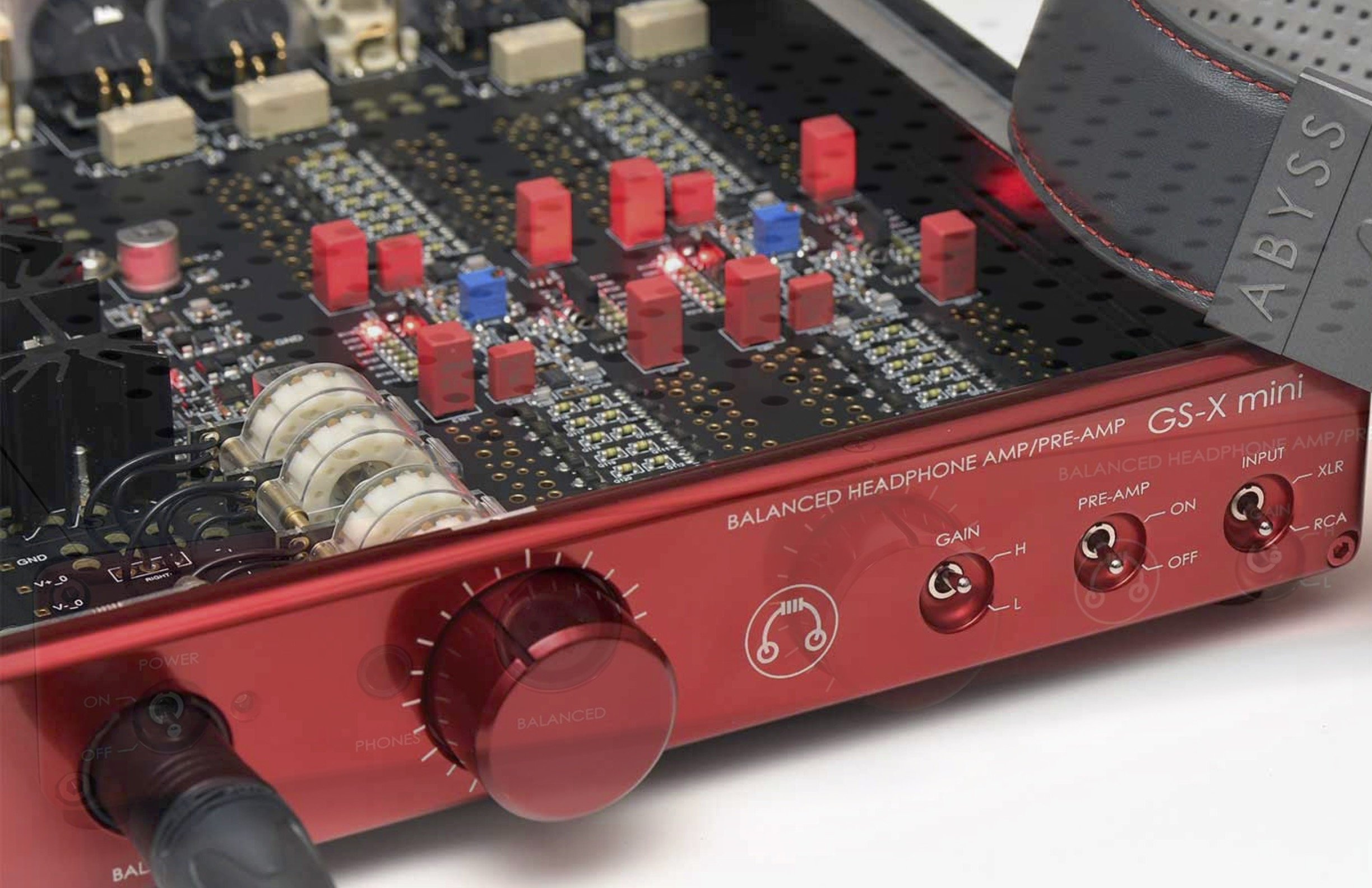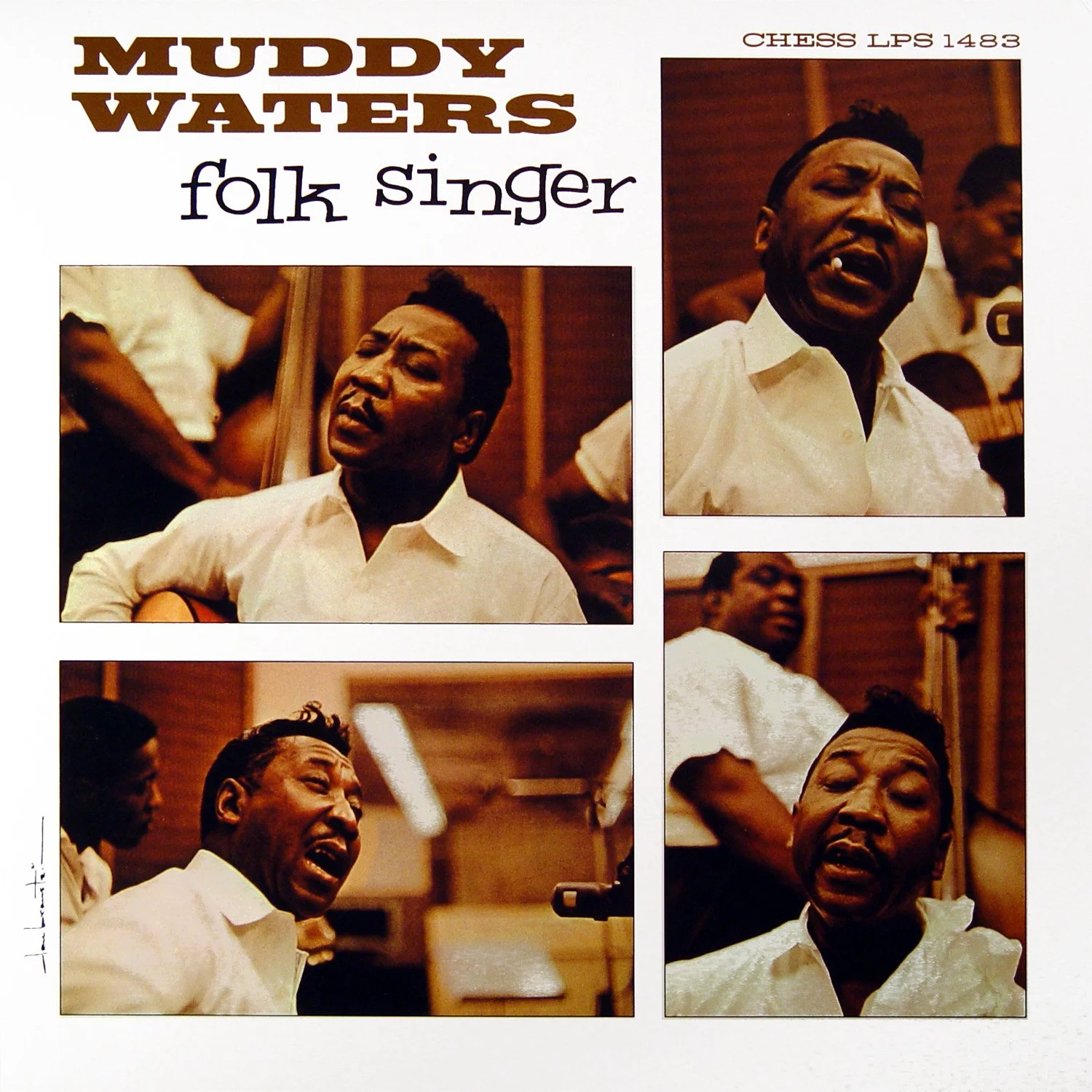HEADAMP GS-X MINI - REVIEW
HEADAMP GS-X MINI!
As Gomer Pyle, of the TV series Gomer Pyle U.S.M.C., was wont to say, “Surprise, surprise, surprise!” It is this dictum of Private Pyle that greets me almost every time I welcome a new review product into my listening room. More often than not the component in question more than validates its curriculum vitae—a short written summary of qualifications—uncovered from research. Of course there are those times when it ‘surprises’ in a different direction and one can scarcely believe that it is the same product researched. Yikes! These instances are ‘black-holed’ never to be heard from again. What’s the point of a bad or ‘flaming review’?
I go on and on about the rise of technology across High-End audio, which appears to be one of the few areas where this rise consistently brings forward positive, welcomed results. It also brings what was ‘state-of-the-art’ and financially out of reach for a good many of us a few short years ago within reach and affordable. Thumb-Drives and R2R DACS, desktop streamers, streaming audio, DAC-enabled headphone amps, etc. are but a few of the many such benefits derived from the march of technology. Huzzah!
There are the stalwarts—AYRE, AUDIO RESEARCH, B&W, LINN, LUXMAN, PARASOUND, STAX, THORENS, etc.—that through thick and thin bring HiFi—High Fidelity—playback continuously forward. And then there are those small concerns that are mostly unknown outside of the HiFi arena. They who possess great passion, who press forward, against the odds, to bring exceptional products to the market. More often than not it is a passion born from a respect and reverence and love for music and a want to share that passion with others.
This brings me to the company HeadAmp based in Virginia, run by the very affable Justin Wilson, and to the subject of the review—the HeadAmp GS-X Mini ($1,995). The HeadAmp GS-X Mini is a headphone amplifier with the power to drive headphones, of all types, that belies its quite diminutive form, and it drives them, without exception, beautifully and well.
I had the absolute pleasure of reviewing its elder (read more expensive) sibling, the Blue Hawaii Special Edition ($6,995) electrostatic headphone amplifier. It is a Top-of-the-Line (TOTL) product with few equals and has been impossible to part from. So it remains part of my reference system, to this date. Does the GS-X Mini merit such accolades? Will it too be impossible to part with?
REFRAIN: Unlike most reviews, this review will be non-sequential, as it will start, below, with how the equipment actually sounds and not the process of physically “undressing” it and/or laying out its various parts, specifications, etc. Think of this review then, as a non-linear movie—Memento, Kill Bill, Arrival, Eternal Sunshine of the Spotless Mind, The Terminator, In the Shadow of the Moon, The Queen’s Gambit, etc—that, likewise, starts at the end and winds its way to the beginning.
The Sound
Musical. Transparent. Otherworldly engaging. I could not identify the tube-like voicing that formed one half of its hybridization—tube and solid state design. Was it an EL34, 845, EL84, 6550, 300B, KT88, etc? Or perhaps some hybridization or cross of several tube-like voicings? Whatever the combination, the HeadAmp GS-X Mini’s voicing is mesmerizing—richly musical via a tonal/timbral balance that is both rich and natural, and yet, exceptionally resolving. Know that long, contented hours will be spent re-listening to your favorite albums with the HeadAmp GS-X Mini.
Further, the GS-X Mini's dynamic range—difference between quietest and loudest sounds—is exceptional, via a very low noise floor intruding into the musical signal, superb resolution, and truly wonderful treble extension. Dynamics are lickety-split fast and microdynamics and spatial details are easily unburied across both the sparse and densely arranged musical passages. And there is both nuance and refinement at the heart of the GS-X Mini. Delicious! Or so say my ears.
Are there better headphone amplifiers? There are—the Mola Mola Tambaqui ($13,500) LTZ Z10e ($7,500), the Enleum AMP-23R ($5,500) (The 3)—but you will have to pay a great deal more than the GS-X Mini to get anywhere near significant improvements above the GS-X Mini. And this is saying quite a bit, as the listed headphone amplifiers were all TOTL components and multiple award winners.
The GS-X Mini’s volumetric cube—its soundstage or how it recreates the original venue—is both wide and quite deep when called for. In this respect, you’ll most probably add more depth and width and height to your various media upon listening. The GS-X Mini’s Staging—its ability to both place and separate musicians, to layer them relative to each other from the front stage to its depth—is fantastic. Far better than any $1,995 headphone amplifier has a right or the ability to render. As I had written in the review of BHSE, its sibling, “The musician at the rearmost part of the stage will be easily identified and that player’s contribution made relevant, where it had not before even been heard.” The beautifully constructed ‘apple’ does not, apparently, fall far from its technological tree.
The GS-X Mini was paired with a front-end that consisted of the Grimm Audio MU1 streamer, the Mola Mola Tambaqui DAC, Bricasti Design M1SE, and the DENAFRIPS Pontus II DAC. It merited Top-of-the-Line (TOTL) pairings in every respect, despite its ‘relatively’ modest pricing.The headphones used were the ZMF Atrium, ZMF Véríté, Meze Empyrean, Meze LIRIC, and the Abyss AB1266 Phi TC. Audience Front Row cables/wires, AntiCables cables/wires, and RSX cables connected the system. The Audience AdeptResponse aR6-T4 provided service as the power conditioner.
Bass
Rumbling. Deep. Substantive. By now those who have read any of my reviews know that my go to for bass response investigation is Eiju Oui’s Stravinsky (Reference Recording). Why? It is a smorgasbord of tectonic, dynamic shifts, transient storms, swarming tones/timbres, near-fathomless bass frequency dives, and soaring treble flights. If not rendered properly it can be a hot mess. Luckily, I have chosen my audio traveling mates well over time (trial and error, no doubt). I smile now as “Infernal Dance of King Kashchey” (Stravinsky, Reference Recording) plays and brings forward the deep subterranean rumble of a California earthquake (of which I’ve had more than my fair share!). The GS-X Mini is only bettered in this respect by the two and a half times more expensive Enleum AMP-23R, which brought higher Richter-Scale bass impact. Driving, taut, and transient quick is the GS-X Mini’s rendering, as the multiple tympani coordinate for their subterranean dive to the Holy-Bass-Head-Grail. Follows Christian McBride’s “Fat Bach and Greens” (Conversations with Christian, Mack Avenue Records)—that I used to evaluate its sibling—BHSE. There is a deep, welcoming, and differentiated resonance across the bass frequency that is, well, magnetic in the way that it pulls you into the music. And when the ruckus starts with the playful, musical, quick-moving mix of Christian’s bass and Regina’s violin dueling or doing their ‘call and response’, texture, palpability, and microdynamics are liberated. I’m afraid it’s playing with the big boys (read more expensive) here. There is not quite the resolution of The 3, but then each one of those is more expensive than the GS-X Mini in multiples!
Midrange
Transparent. Musical, musical, musical. Palpable. Textured. The midrange of the GS-X Mini is singularly detailed, resolving, dynamic, and, coupled with its musicality and its textured palpability, one experiences sublime-momentary-catatonia. In this case, said catatonia is induced by Muddy Waters’ Folk Singer (Geffen) with its you-are-there realism and stop and start dynamics, as the air swirls, inhaled, exhaled, and as though excited by the various guitars and drums from within and around the musicians’ bodies. From “My Home is in the Delta” to “You Can’t Lose What You Never Had” there are in-and-out bouts of sublime-momentary-catatonia. Did I mention the GS-X’s ability to bring 3-dimensionality, palpability ‘so hard’ that there are moments of shifting off one’s headphones and looking about the room to determine where a particular sound has emerged from? Just saying. Moving from Muddy’s voice to Mercedes Sosa’s “Kyrie [Vidala-Bagula]” (Misa Criolla, Universal Music Argentina S.A.) brings Sunday mass with full choir after Saturday night’s barroom rollicking. May I have another bout of sublime-momentary-catatonia, please? Yes, you may. And so it was. The depth and width and deep-bass gravitas of this opening movement is powerful, and, if well rendered, offers a vast and holographic venue, a compelling visual, and a powerful sobering mix. The GS-X brought it all! And what was a one track review of this album became, again, a whole album review of Misa Criolla. Brilliant!
Treble+
Extended. Silken. Resolving. I again mostly followed the same path, in terms of musical selection, for treble evaluation that I had followed for the BHSE. On Dave Brubeck’s “Take Five” and “Blue Rondo à la Turk” (Time Out, Columbia-Legacy) the cymbals danced airily or beautifully air-infused, not far removed from the BHSE, but removed, nonetheless. It is that little bit extra that separates TOTL from everything else. That said, the HeadAmp GS-X Mini made no excuses for its rendering of the performance, as it clearly didn’t have to. Three-dimensionality was fully intact once again, as Paul Desmond’s textured, sonorous saxophone spoke as though in a live performance. Hilary Hahn’s The Essential Hilary Hahn. provided revelations that were like triple-chocolate cake and ice cream with a cappuccino, followed soon thereafter by a wee shot of a fine, smoky bourbon (Michter’s 10 Year Kentucky Straight Bourbon). In “Partita for solo violin No. 2, D minor,” to say anything other than that Hilary’s violin reached skyward with a highly-resolved, silken richness that was beautifully textured, would be to miss the point entirely. And the GS-X Mini’s musicality pulled one deep into the music of this 17:46 track, as if the track itself were a quantum singularity which could not be resisted (see sublime-momentary-catatonia). The track ended far too quickly via the GS-X’s rendering. That happens when the music sounds really, really good. Bravo!
The Wrappings and Accessories
The HeadAmp GS-X Mini comes in a printed, cardboard box that bears the HeadAmp logo across, literally, every inch of its every side. It’s a functional, ‘quasi-artistic design’, in a box charged, first, with protecting its inner contents.
Inside the box one finds a utilitarian enclosure with the GS-X Mini wrapped in a pinkish-plastic bag and encased at its left and right ends in foam braces. Instructions, a power cord, warranty, decals also lie within. Minimalism.
Functional utilitarianism and minimalism seem appropriate ways to describe the external and internal aesthetic of the GS-X Mini’s wrappings.
Design—Look, Feel, and Technology
Clean. Low-profile. No nonsense. Solid. Much like its sibling the Blue Hawaii Special Edition (BHSE) the GS-X Mini with its Candy-Apple Red facade (though it comes in a number of flavors) will sit beautifully upon small desk or shelf or rack and take a minimum of space. It is solidly built, substantive, but will not provoke hernias or back ache or muscle spasms. The GS-X Mini operates, fully, in Class A, which can get quite hot and so as to diminish heat build up, its top plate is replete with with a matrix of small, circular vents, its bottom plate with a good number of long, oblong vents. And, finally, like its sibling, a choice of a finishes—blue, purple silver, gold, black—is available. In the end, the HeadAmp GS-X Mini is a svelte, diminutive, well-constructed beauty, of reassuring mass.
FUNCTIONALITY
Again, like its sibling—BHSE—the GS-X Mini is quite easy to get going and to operate—plug-and-play—with clearly defined choices regarding gain (high or low), input (XLR, RCA), and operational functionality (preamp, no preamp).
The front face of the GS-X Mini from left to right features an On/Off switch, headphone outputs for a ¼” (singled-ended) or XLR (balanced) option, at its center a volume control, and three toggle switches for Gain, Pre-Amp, and Input.
The back facade of the GS-X Mini features, from left to right, a pair of XLR inputs, a pair of RCA inputs, followed by a pair of XLR preamp outputs, and a pair of RCA outputs. On the far right side is the receptacle for the AC input (power cord). It is a simple and straightforward functional design.
Conclusion
There were more than a few times when I sat, stared, and shook my head at the HeadAmp GS-X Mini, as it perched all humble and diminutive on my desk. “You can’t possibly be making all of this incredible music,” I’d think. Then I’d imagine it answering, “And ahh, what else is? Duh!”
If I were a betting man, I’d say that this imagined vignette will repeat itself time and time again in the homes of those who have adopted this unpretentious, yet potent, headphone amplifier.
The HeadAmp GS-X Mini offers up prodigious detail, and resolves beautifully with a richness and natural warmth that are both beguiling and compelling. It has one of the best dynamic ranges that I’ve come across at its price point. And, as I stated above, though there are better headphone amps, they come at multiples of its price. There are few of which I am now aware at anywhere near its price, or even at double its price that can compete.
It is clearly deserving of our GOLDEN KEYNOTE AWARD for its outstanding musical prowess as married to incisive resolution and detail retrieval. These things I had believed, not so long ago, to be mutually exclusive. I now find that they—incredible musicality and resolution and detail—are actually not so. My first awareness of this came from the electrostatic world. My latest revelation comes from this headphone amplifier. Please treat the HeadAmp GS-X Mini as if it were a TOTL headphone amplifier and it will rise to the occasion and act as one.
Pros: Incredible musicality, sumptuous tone and timbre, 3-dimensionality, superb texture and palpability, incisive resolution, and detail retrieval.
Cons: Ahhhem, two XLR inputs, perhaps a special edition for reviewers. Though I imagine space would be an issue. Just saying.
Technology and Specification
HEADAMP GS-X MINI
Dimensions - 11 x 9 x 2"
Weight - 6lb
Inputs - 1x XLR, 1x RCA
Outputs - Headphone: 1x 4-pin XLR (balanced), 1x 6.35mm (single-ended); Active
Pre-Amp: 1x XLR, 1x RCA
Operation - Pure Class A
Power Ratings - 4W into 50 ohms, 6W into 25 ohms
THE SYSTEMS
1.
GRIM AUDIO MU1+
MOLA MOLA Tambaqui
MEZE EMPYREAN
ROSSON AUDIO RAD-0
ZMF ATTICUS
AUDIENCE FRONT ROW CABLES
TORUS RM20
2.
Roon Nucleus+
DENAFRIPS Pontus II
MEZE EMPYREAN
ROSSON AUDIO RAD-0
ZMF ATTICUS
AUDIENCE FRONT ROW CABLES
TORUS RM20
The Company
HEADAMP
GS-X MINI Headphone Amp (w/DACT CT-24 Stepped Attenuator) $2,195
www.headamp.com
support@headamp.com
Call or Text : 434-981-2829






